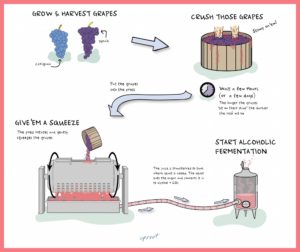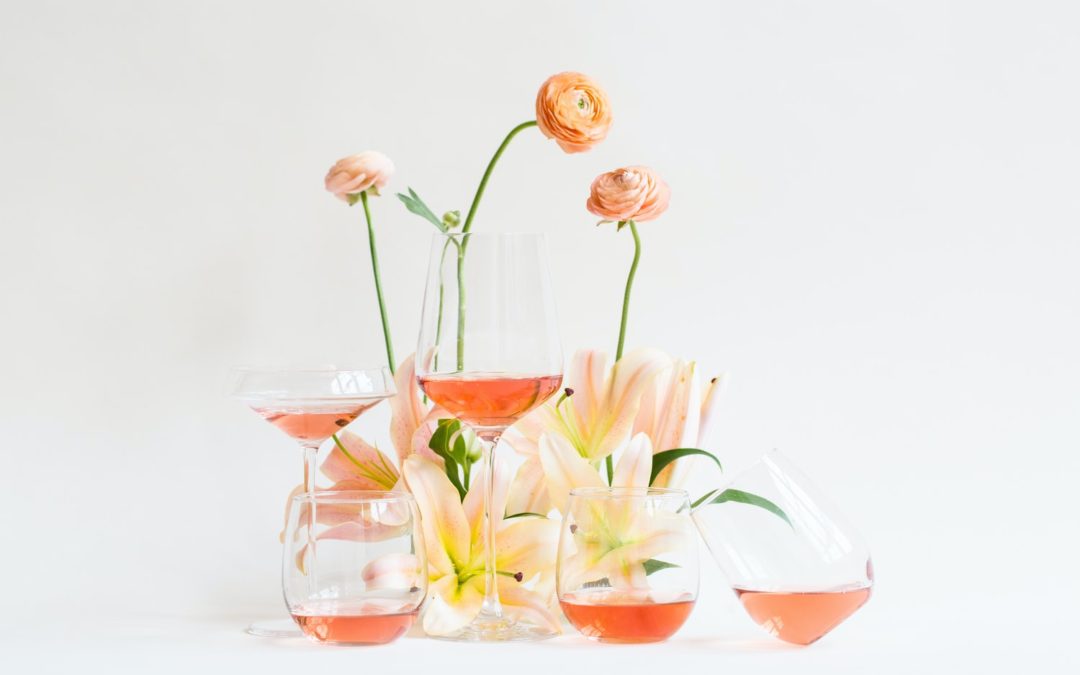As we sprint enthusiastically into the warm summer weather (at least that’s what I’m doing), it’s definitely time to think about chilling some Rosé! Rosé is the go-to beverage for many wine lovers in the summer and for good reason!
It’s light, chilled, refreshing and who doesn’t love a splash of pink in your wine glass? Rosé has become very popular over the past few years. I find it very versatile as it can be dry or sweet, pale to deep pink, and still or sparkling. Pick whichever you like best!
Rosé is made with red/black grapes in a method that combines both the processes of red wine making and white wine making. As in red wine making, the grapes are harvested and then pressed. The juice is left in contact with the skins but here’s where it’s different…the contact with the skins is only for a few hours to a few days depending on the color of the Rosé wine that is desired. Then, as in some white wine making, the juice is put into stainless steel tanks, yeast is added to eat the sugar which creates alcohol and CO2. Then the Rosé wine is bottled and sold at your neighborhood wine merchant.

Sounds pretty straight forward, right? Well, winemakers have to go through a rigorous process to make sure the color and taste/aroma profile is what they want to achieve. A beautiful Rosé will have a flavor profile that reflects the grape variety and place where it comes from. Some of the most popular grape varieties used when making Rosé wine are:
Grenache: Fruity with high acidity, medium pink color and fuller body.
Sangiovese: Fruity with high acidity, coppery pink color.
Tempranillo: Savory with light body and pale pink color.
Syrah: Savory with fuller body and a deep pink color.
Pinot Noir: Fruity with bright acidity, medium body with medium pink color.
Provence Blend: (Grenache, Cinsault, Syrah, and Mourvèdre grapes): Fruity with high acidity and a light body, pale color. A Rosé for almost any dish. My personal favorite!
Rosé has a fairly consistent flavor and aroma profile although in varying degrees based on the grape or grapes used. Most prominent are red berries, citrus, melon, flowers, herbal, and sometimes lemon or minerals and spices. All of the dry varieties will have some combination of these.
Zinfandel (White Zinfandel): Moderately Sweet with medium body and color.
I wanted to add a fairly sweet Rosé as White Zin is very popular.
All of these Rosés love to be served chilled to 50-60 degrees F. I would suggest that you should drink your Rosé out of a wine glass. I say that because I find it much more enjoyable than drinking it out of a paper or plastic cup! So, you can use a white wine glass with a longer stem. This helps the wine stay cool. The shape also tempers the fruitiness and brings its acidity out. If you are outside and don’t want to use glass, try an acrylic white wine glass of the same shape.

Whichever Rosé you are partial to, chill it and drink it on a warm summer night on the patio, front porch, backyard, by the pool or wherever you like to relax and unwind. As a fun change, try one of the other Rosés I mentioned above. Maybe you’ll find a new favorite!
Enjoy the warm weather and a bottle of Rosé.
Cheers!

